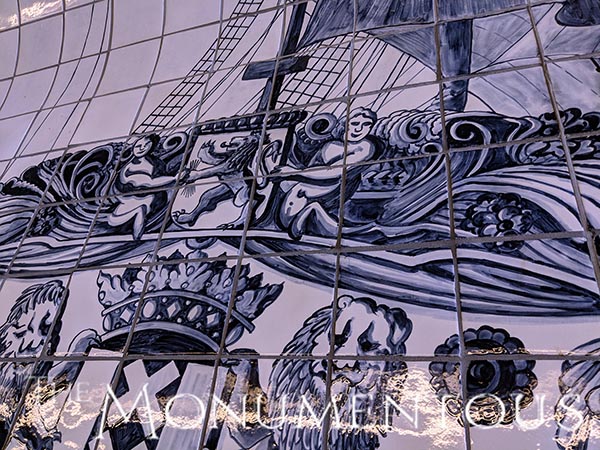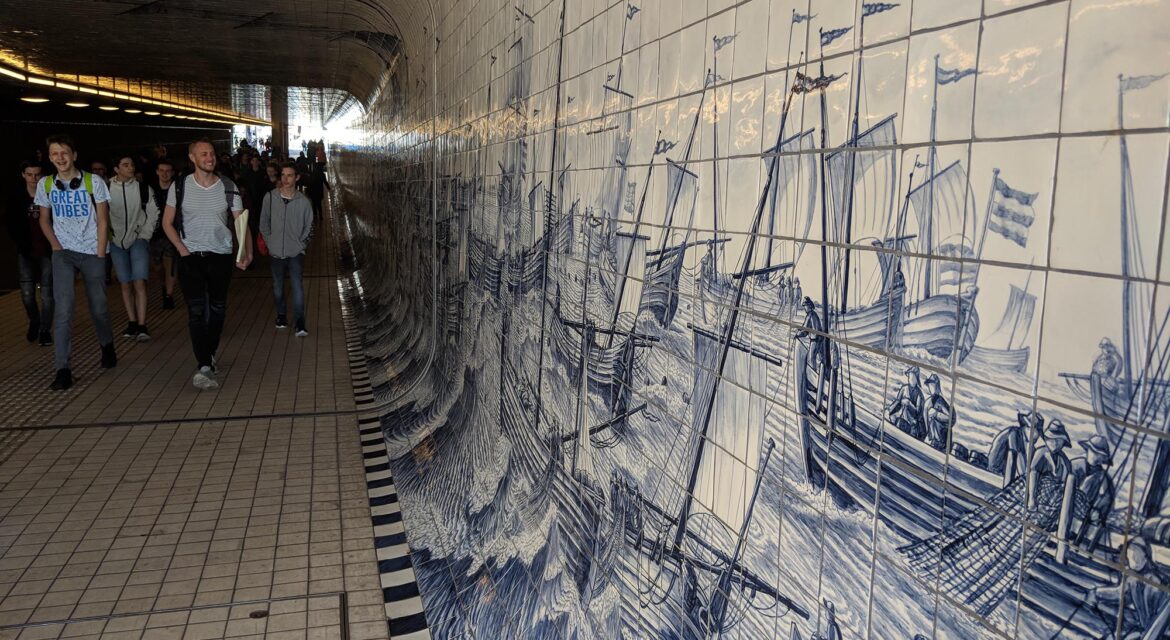 Tunnels serve as essential means of transportation in cities across the world but few have been transformed in a way that allows them to still support this such purposes while also becoming something more like Cuypers Passage (Cuyperspassage) in Amsterdam, the Netherlands. Decorated with hand-painted Dutch tiles, Cuypers Passage embraces the history of the region in a way that creates engagement to the benefit of stakeholders and the surrounding community.
Tunnels serve as essential means of transportation in cities across the world but few have been transformed in a way that allows them to still support this such purposes while also becoming something more like Cuypers Passage (Cuyperspassage) in Amsterdam, the Netherlands. Decorated with hand-painted Dutch tiles, Cuypers Passage embraces the history of the region in a way that creates engagement to the benefit of stakeholders and the surrounding community.

Inspired by the Work of Cornelis Boumeester
 Opened in 1889, Amsterdam Central Station is one of the busiest stations in the Netherlands. It is the work of the architect Pierre Cuypers, who also designed the Rijksmuseum. In 2008, a desire to expedite pedestrian and bicycle traffic through the facility rather than around it led to the development of Cuypers Passage (Cuyperspassage in Dutch) in homage to Cuypers. It runs underneath Amsterdam Central Station to give cyclists and pedestrians a fast and safe connection between both sides of the mammoth facility.
Opened in 1889, Amsterdam Central Station is one of the busiest stations in the Netherlands. It is the work of the architect Pierre Cuypers, who also designed the Rijksmuseum. In 2008, a desire to expedite pedestrian and bicycle traffic through the facility rather than around it led to the development of Cuypers Passage (Cuyperspassage in Dutch) in homage to Cuypers. It runs underneath Amsterdam Central Station to give cyclists and pedestrians a fast and safe connection between both sides of the mammoth facility.
Measuring 110 meters long, ten meters wide and three meters high, the entire wall of Cuypers passage is covered with Delft Blue tiles that represent fragments of Dutch naval history. Running alongside the pedestrian route of the tunnel, these tiles provide audiences with an essential connection to Amsterdam on multiple levels.
Designed by Irma Boom Office, the scenes are inspired by the work of 17th-century artist Cornelis Boumeester, a Dutch tile painter who specialized in land and seascapes. Ceramic company Royal Tichelaar Makkum spent over a year painting the 46,000 wall tiles in the traditional Dutch tile size of 13 x 13cm. The blue and white color palette is a staple of Delftware ceramics, which have been a major industry in the Netherlands since the 17th century.
The tile tableau depicts scenes from Dutch naval history with large and small merchant vessels, herring busses with nets in place, churning waves and seagulls. Cultivating a sense of being inside an “urban room,” audiences going through Cuypers Passage from the center of the city head north toward what was once considered the new part of Amsterdam, with the lines of the tile design gradually dissolving. They were designed this way to visualize the transition from the old Amsterdam to the new one.
The exquisite detail inherent in the overall design and individual tiles compels the attention of audiences whether it’s their first time through Cuypers Passage or it is part of their daily commute. The piece has transformed what would otherwise be a nondescript tunnel, highlighting what it can mean for a landmark to positively dimpact what would otherwise be a simple piece of infrastructure.

Celebrating the Legacy of The Netherlands
 The creation of Cuypers Passage was just part of the overall master plan for a 21st-century revamp of Amsterdam Central Station, showcasing the sort of opportunities that exist for the creation of landmarks as a part of larger projects. Thousands of commuters make use of Cuypers Passage on a daily basis, exposing each to the essential legacy of the region and country in a way that continues to make a positive impact on the station and the entire city.
The creation of Cuypers Passage was just part of the overall master plan for a 21st-century revamp of Amsterdam Central Station, showcasing the sort of opportunities that exist for the creation of landmarks as a part of larger projects. Thousands of commuters make use of Cuypers Passage on a daily basis, exposing each to the essential legacy of the region and country in a way that continues to make a positive impact on the station and the entire city.

